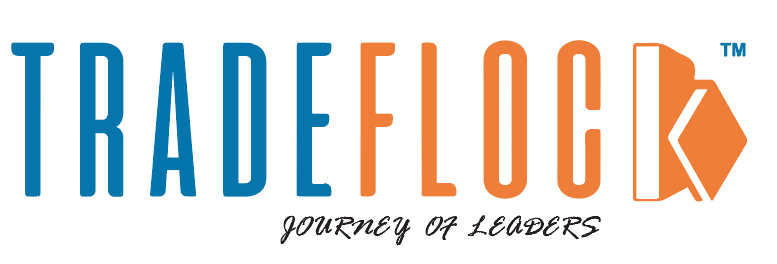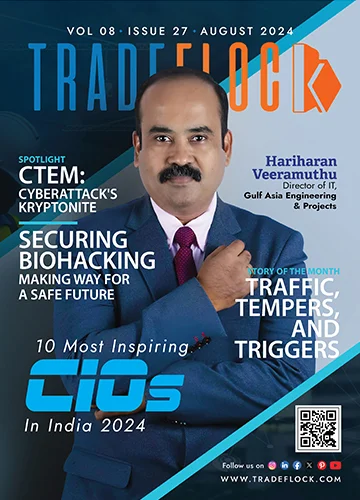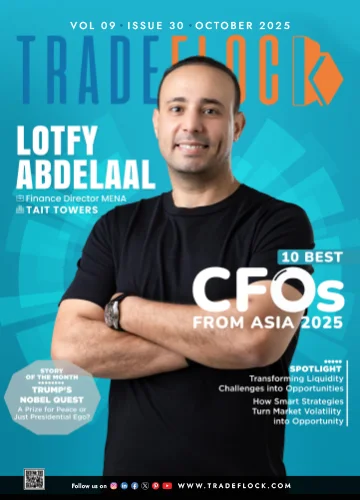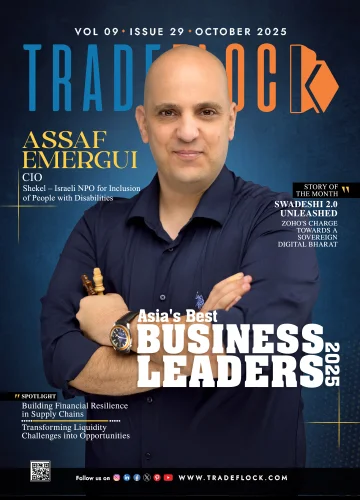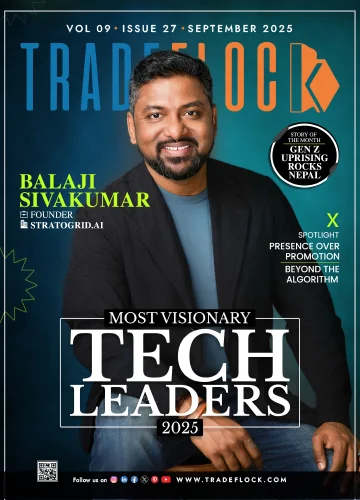
Visionary Leader Redefining Global IT Standards
Gopichand Kodimela
Global IT Head,
NoblQ
With his multifaceted approach to integrating cutting-edge technology with strategic business imperatives, Gopichand Kodimela epitomises transformative leadership in global IT. His profound technical acumen and visionary IT governance distinguish him as a pivotal force in driving organisational success through innovation. Central to Gopichand’s leadership philosophy is his holistic understanding of technology’s strategic impact. Beyond crafting pioneering IT strategies, he excels at articulating their tangible benefits, aligning them closely with business growth objectives across diverse industry landscapes. A staunch advocate for cybersecurity and regulatory compliance, Gopichand fosters a culture of rigorous security measures and operational resilience. His expertise ensures robust compliance with complex regulatory frameworks while promoting continuous technological advancement. Throughout his career, he has forged dynamic, cross-functional partnerships that align with broader business goals, delivering solutions that enhance organisational performance and market competitiveness. With extensive hands-on experience in global IT architecture, cybersecurity, and scalable infrastructure solutions, Gopichand excels in managing multinational teams and overseeing complex international projects. His strategic leadership in executive roles optimises resource allocation, driving substantial ROI and sustained growth. As Global IT Head at NoblQ, Gopichand redefines technological standards, leveraging visionary leadership and operational prowess to propel the company towards unparalleled success in rapid digital transformation. How? Read to know.
What initially drew you to cloud computing and cybersecurity, and how has your passion for these fields evolved?
My initial attraction to cloud computing and cybersecurity stemmed from a fascination with technology and a desire to solve realworld challenges. In my first decade, I focused on networking and security, architecting midto large-scale data centres, which fuelled my passion for these fields. Starting in 2011, I designed and deployed over 800 private cloud solutions and implemented robust security frameworks across diverse industries. The rapid evolution of cloud technology and the critical need for cybersecurity solidified my commitment to these areas, driven by the opportunities to innovate and make a tangible impact. Continual learning and adapting to technological advancements and emerging threats became essential as I gained handson expertise. I witnessed firsthand the transformative effects of cloud computing and cybersecurity on organisational success, leading me to embrace leadership and mentorship roles. These experiences fostered a culture of innovation and excellence within global teams, and working in diverse environments broadened my perspective on the global significance of these disciplines.
What strategies do you use to align IT initiatives with business goals, driving revenue growth and operational modernisation?
Aligning IT initiatives with business strategies to drive revenue growth and modernise operations requires a multifaceted approach. Understanding the company’s overarching business objectives is crucial; aligning IT initiatives with these goals ensures technology investments directly contribute to growth and efficiency. Cloud modernisation strategies maximise value while minimising effort and optimising technology investments. Prioritising projects through data analytics drives revenue growth and operational efficiency improvements. Open communication between IT and business stakeholders is essential for alignment. Regular meetings and workshops foster collaboration and ensure IT initiatives meet business priorities. Implementing IT governance frameworks like ITIL ensures compliance with regulations and delivers organisational value. Agile methodologies enable IT teams to adapt quickly to changing needs, enhancing responsiveness to market conditions and customer requirements. Conducting rigorous ROI analysis ensures effective resource allocation and tangible business benefits from IT projects. Strong relationships with technology vendors and partners provide access to cuttingedge solutions in cloud, cybersecurity, and applications, supporting IT initiatives and driving business growth.
What are your thoughts on India's tech landscape in cloud computing and cybersecurity?
India’s tech landscape in cloud computing and cybersecurity is dynamic and promising, with significant adoption across industries driven by scalability, cost-efficiency, and digital transformation needs. Both large enterprises and SMBs are leveraging cloud services, supported by tailored solutions from major public cloud providers. India’s vibrant startup ecosystem is driving innovation in cloud computing and cybersecurity, addressing challenges like cloud management and data protection, and attracting global investments. However, cybersecurity remains a critical concern due to increased digitisation, leading to rising cyber threats. Companies are investing in cybersecurity infrastructure, training, and talent to protect digital assets. Government initiatives such as Digital India and Start-up India are bolstering cybersecurity capabilities through policies, regulations, and collaborations. Overall, India’s tech landscape presents substantial opportunities for innovation and collaboration in cloud computing and cybersecurity. Addressing cybersecurity challenges and nurturing talent are crucial for sustained progress and realising the full potential of India’s digital future.
Can you share an example where you bridged gaps in technology, process, and automation?
Bridging significant gaps across technology, processes, and automation requires collaboration, adaptability, and a holistic approach. In one instance, during a cloud migration project, data migration posed a challenge due to legacy billing systems performing critical functions manually. These systems lacked API capabilities, necessitating manual data migration using CSV formats. To address this, we implemented RPA in ERP systems, which prevented clerical errors and automated data migration across different systems. In another instance, legacy systems used for production line printing were causing frequent errors, impacting the production cycle. Integration challenges made it difficult to fetch accurate data. We modernised the legacy systems using next-generation services (microservices) and cloud migration design patterns, which improved integration with existing production services, reduced system downtime, and increased production time. This modernisation reduced waste costs and risks, ultimately increasing the ROI.
